What qualifies as a varminter rifle? How does off-the-shelf accuracy compare to that offered by a mint custom build? Tim Pilbeam investigates with a triple varmint test
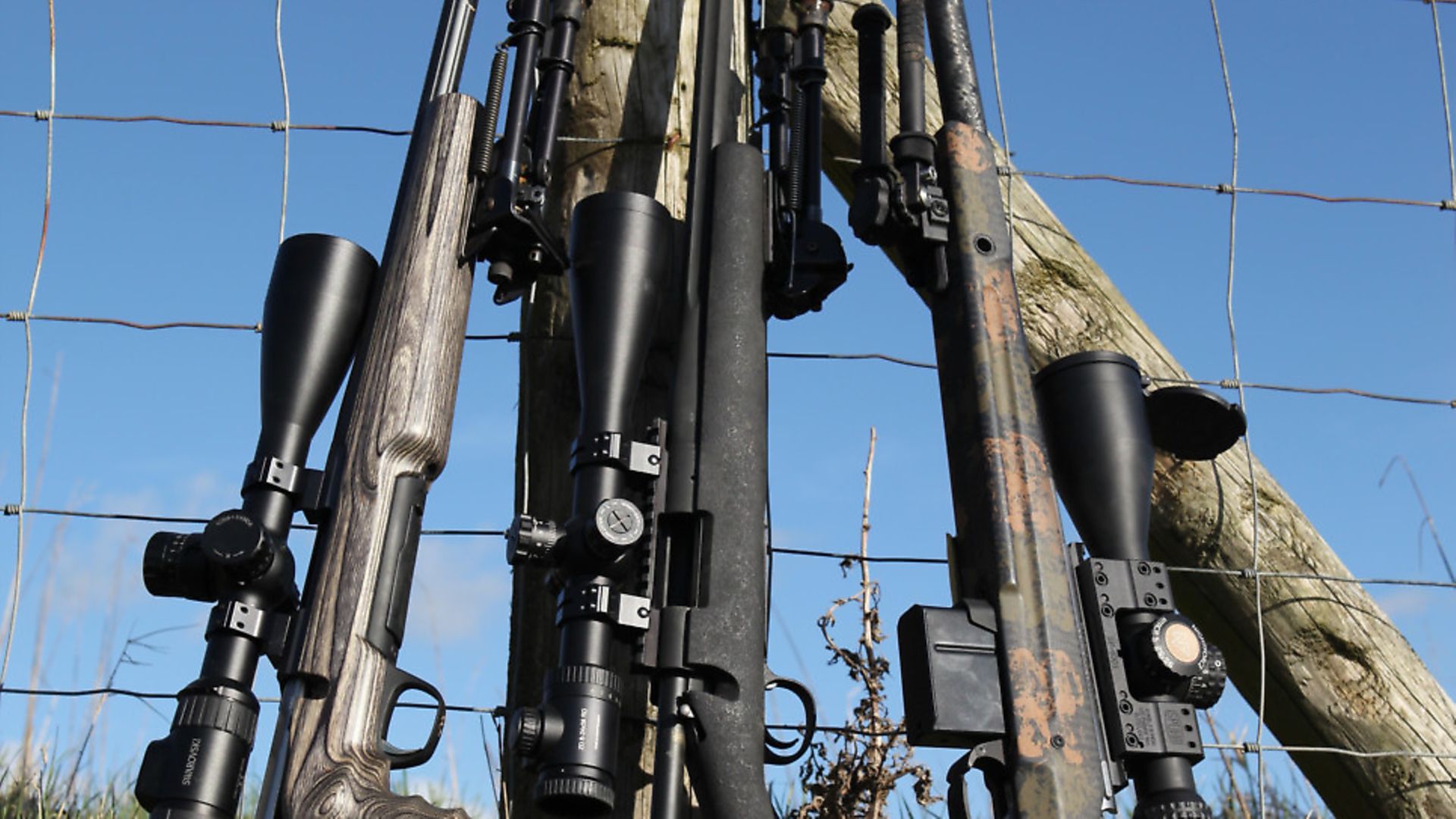 credit: Archant
credit: Archant
Whenever I write the word ‘varminting’ in any of my rifle pieces, a red line immediately appears under it and the spellchecker informs me there is something wrong with the word. I wonder if that is the same across the pond, when my US colleagues write the same word in their articles?
I took the time to explore the origin of the word, only to find out that the word ‘varmint’ refers to an irritating or obnoxious person or animal, and that it is an American slang word for vermin or animals unprotected by game laws.
Abroad, gophers, jackrabbits, nutria, marmots, groundhogs, possums and coyotes fall into this category. In the UK, rats, crows, pigeons, rabbits, squirrels, stoats, weasels, wild cats, goats, foxes and even some small birds are all classed as vermin as they are considered to be a nuisance or pernicious to the native fauna and flora.
How can vermin be controlled? They are mostly small in size and, more annoyingly, they are not easy to approach. This sounds like the perfect opportunity for our American friends to sit on a heavy bench with a super-accurate rifle at long distances and have some fun. Perhaps this is one of the reasons why the sport has been so popular in the US for over 50 years – all those skills gleaned out on the range punching paper at long distances can now be used to take out unpredictable live targets.
Sounds interesting, but long-range varminting has its critics. Why shoot an animal at long range, when one of the main skills of hunting is getting as close as you can before pulling the trigger? Others will say that the hunter has an unfair advantage over the animal so it is not ethical.
Shooting live game under 250 or 300 yards requires a very different mindset to the rifleman lying up at 500 yards, and this is where the lines start to become a little blurred. Can anyone shoot accurately at longer ranges? I remember, over 10 years ago, writing an article which explained how I shot rabbits at 648 yards. The article was obviously ahead of its time for the UK, as the abuse the editor received was a little heated, to say the least, with one reader telling me that it is impossible to tell the difference between a molehill and a rabbit at that distance.
It now seems to be more acceptable to take longer shots, thanks to new technology improving kit and manufacturing processes (and therefore accuracy). For the sake of this article, I am going to park all those moral and ethical concerns, and concentrate on the hardware that is involved in the ‘varmint rifle’.
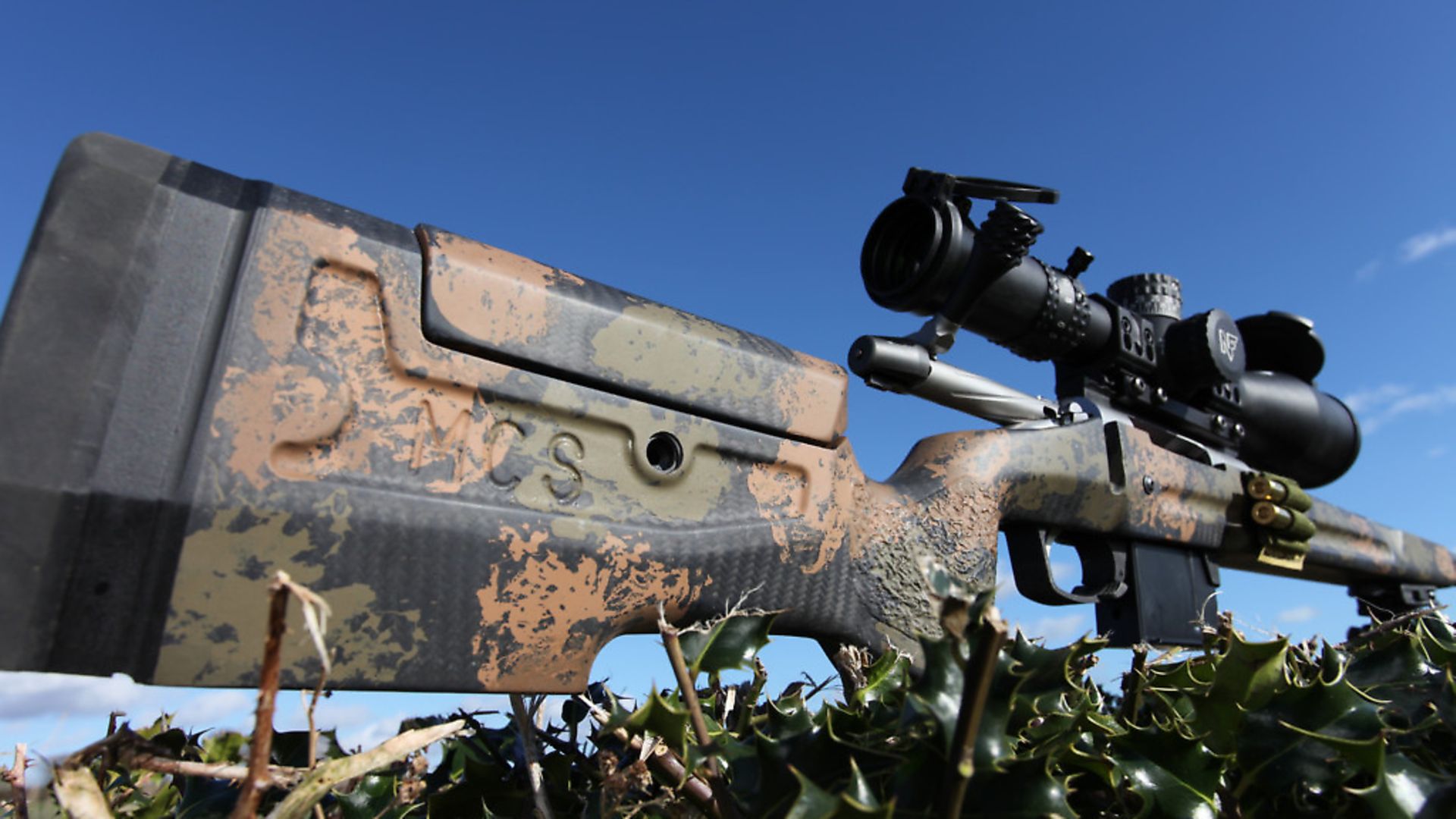 credit: Archant
credit: Archant
The varmint rifle
Starting with the calibre, purists use say anything from .20 to .243, choosing projectiles that are light and fast, resulting in a very flat trajectory. These bullets start at 3,000 fps, with some calibres such as the .220 Swift and the .204 Ruger travelling in excess of 4,000 fps.
They are generally very light and, importantly, frangible, disintegrating on impact which is key to the safety of those long shots on flat open ground. Range estimation is important, but less of an issue if the bullet shoots as flat as possible. If smaller animals are in your cross hair, the whole job becomes a little tougher, and this is where accuracy plays a major part.
So, what is a varmint rifle? The barrel will probably be a thicker profile and maybe longer than a hunting model, secured to a heavy stock, perhaps with a wider fore-end to shoot off sandbags or other platforms. In other words, it is a target rifle, designed for long-range precision hunting. It is not a rifle that would be your first choice to take stalking over the hills in Scotland, as it is heavier and more bulky, not forgetting the Christmas tree of a scope that is normally attached to the top.
The preparation is generally different than that of the everyday hunter. Out comes the wind meter, range charts or apps, stating the drop off and windage of the bullet. There may also be some form of extra rifle rest, followed by a smoke or a cup of tea, allowing the shooter to observe the weather conditions well before the rifle is approached.
Observational skills are essential. Glassing wide areas of ground is key to spotting vermin, but long shots open the shooter to many safety issues, as 100% safe backstops are a luxury on flatter terrain so time is taken to make sure the shot is safe. Light, frangible bullets that break up on impact, whether impacting the animal or the ground, reduces the risk of ricochet enormously.
After setting up the hardware, the shot will be taken in slow motion. In other words, it is a slow, methodical technique, as the margin for error is the difference between a kill, an injured animal or a clean miss. Snatching the trigger at 500 yards will have a huge effect on the point of impact compared to your standard 100-yard shot.
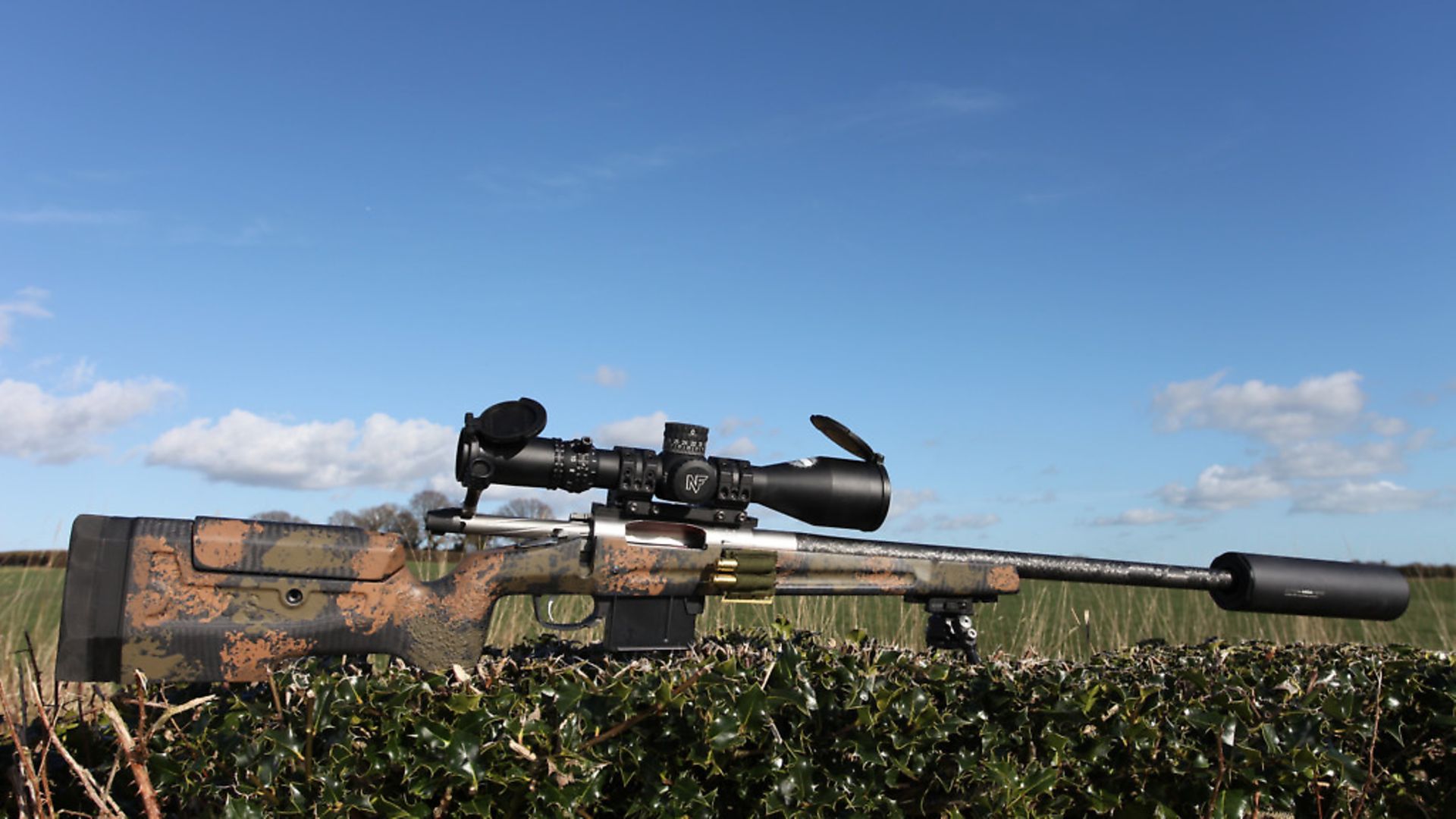 credit: Archant
credit: Archant
let’s be Accurate
Improving accuracy requires a higher level of detail and more advanced manufacturing. Fully free-floating barrels, lighter triggers, bedded actions, adjustable stocks and specialised optics are all essential to ensure accuracy. Heavier barrels, many fluted primarily to reduce weight, are favoured if concurrent shots are to be taken, as they ensure the point of impact is not being affected as the barrel warms up.
The list goes on, and chasing accuracy can become very addictive, not forgetting expensive. Having said that, most manufacturers now produce varmint models which are competitively priced – but can they guarantee accuracy and perform consistently at longer ranges? Has continuous technological innovation made the need for customisation and accurization of rifles a thing of the past? How far do we actually need to go? It seems like a great excuse to borrow some rifles, burn loads of ammo and test them out!
Before I get a little carried away, how accurate does a rifle need to be to shoot at long range? Does it have to be a specialist model to do it well? Most modern smaller rifles (30 calibre or under) now shoot to around 1 MOA (1” at 100 yards), so in theory, taking a fox at 500 yards with a killing zone of say 6” should be adequate for the job.
Mix in a little wind, lesser quality optics, poor technique, sub-standard ammo, and then the greatest variable, to quote Andrew Venables, “the nut behind the butt,” all contribute to a detrimental effect on that final shot. If the rifle and the shooter both regularly perform to 0.5 MOA, then pure logic states that everything becomes a little more consistent.
I had a standard Browning A-bolt that shot better than I could on most days, using Federal Premium 70g Nosler ballistic tip ammo to less than 0.5 MOA, demonstrating the point that specialised, accurized rifles are not a prerequisite for long-range shots. However, reducing as many variables as possible is why we invest in better kit, take up home loading, and use more knobs and dials! As my mate Matt says, “the man who dies with the most kit wins”!
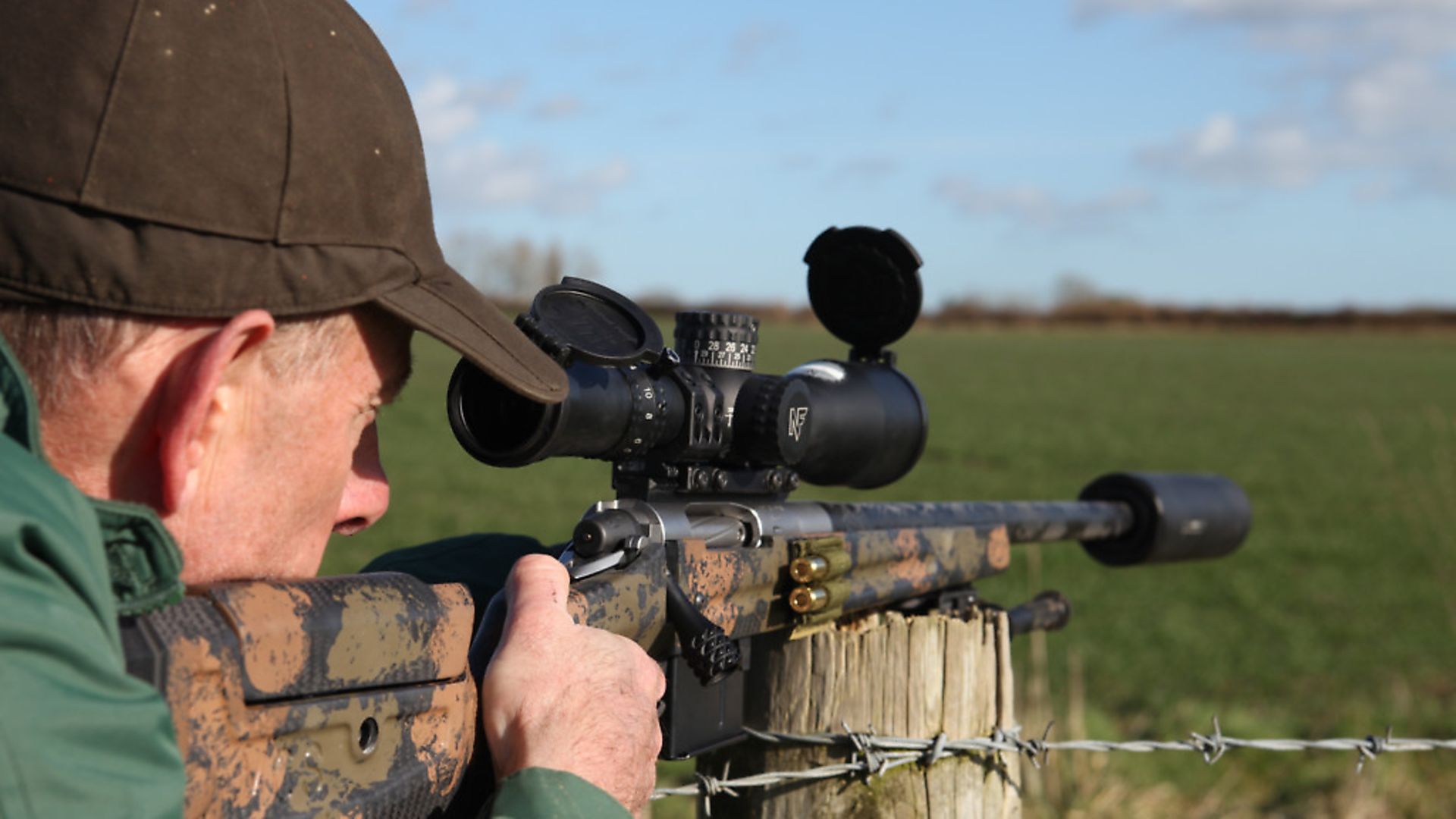 credit: Archant
credit: Archant
The three specimens
I have three varminters for you: the Browning X-Bolt Varmint GRS and the Remington 700P LTR are both standard off-the-shelf rifles at around £1,300. The other is an expensive custom rebuild – a one-off that most of us would love to just shoot, let alone own.
The X-Bolt needs no introduction, as it has been a success story for Browning for the past five years. The bolt has three lugs, giving it a short, compact 60° throw, ideal for those smaller calibres. As for the Super Featherlight trigger, the one on test was set to a crisp 2.75lb, and as it felt good I did not feel the need to adjust this to a lighter setting.
The Varmint GRS has a standard X-bolt action, but it has been transformed into a long-range specialist with the addition of a beefed up longer barrel and glamorous laminated stock. The heavy profiled floating barrel is 24” long, comes with an 18x1mm thread and is lightly fluted for most of its length with a twist rate of 1 in 10”.
The GRS stock really catches the eye. It is made from a bright oil-finished birch laminate, with 25mm speed lock adjustments for the length of pull and cheekpiece. To the rear, the adjustable Limbsaver recoil pad offers superior protection for those larger calibres. The stock offers a very rigid chassis for the long-range varminter but, more importantly, gives the shooter one of the most ergonomic fitting pistol grips on the market. I agree, it is quite large and bulky with a wide fore-end and deep palm swell to the right, but it is so comfortable. The Varmint GRS does look like a true long-range, fitted with an MAE compact moderator rifle, but what about the other factory rifle here on test?
The Remington 700 LTR (light tactical rifle) is only available in .223, .308 and .300 Rem Ultra Mag, and is primarily designed for law enforcement applications in the US. With its very short and thickly profiled 20” barrel and slimmed down stock, it is designed to be more compact when compared to the Remington Police models.
The bolt differs to the Browning as it has two lugs, not three, resulting in a 90° throw. The barrel has three deep flutes that obviously reduce weight, aid heat dissipation and, surprisingly, “enhance barrel rigidity for pinpoint accuracy”. I’m not so sure about the latter, but it looks beefy, ready for action, and comes with an 18x1mm thread, and for the .223, a 1 in 9” twist, also fitted with an MAE compact moderator.
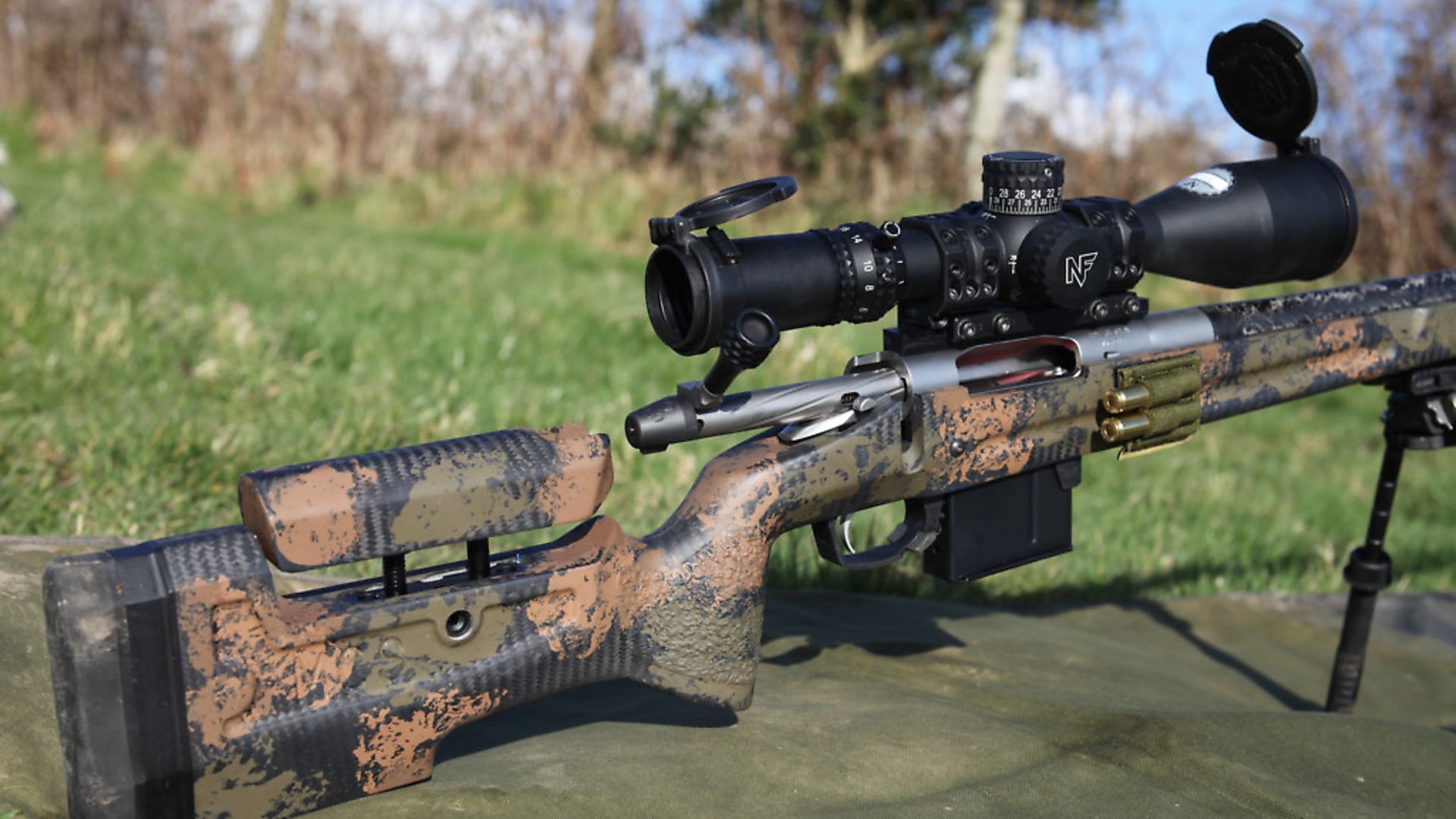 credit: Archant
credit: Archant
Safety is a standard two-position with a 40x trigger assembly set to 3.8lb from the factory, so I quickly adjusted it down to 2.25lb. In the same fashion as the barrel, the slim black synthetic HS Precision stock looks and feels like a true tactical rifle. It is built around a thick aircraft aluminium grade bedding system that runs the entire length of the receiver. It is finished in a textured, non-reflective material that grips in all extreme operating conditions and shows off a robust recoil butt pad to the rear. The pistol grip is very simple compared to the GRS, with very little palm swell, and comes only with a floorplate magazine. Once again, it is a standard 700 action on steroids, with a compact sniper or tactical stock and aggressively-styled barrel. But what about the fully-customised varminter?
A quick call to Paddy Dane of Dane and Co. saw him appear with his new pride and joy. It is a bespoke custom build incorporating many of the latest designs now used by the competitors in the US Precision Rifle Series, who shoot from 300 to 1,000 yards! It is more of a target or competition-biased rifle, but can easily cross over for a serious fox shooter or even be used as a deer rifle.
Without getting into too much technical detail, it is built around a Bighorn Arms TL3 action which offers a controlled round feed and a mechanical ejection but, interestingly, it has an interchangeable bolt head for different calibres. If you want a change, all you need to do is swap the barrel, magazine and bolt-head.
Take a look at the barrel! It looks rather impressive, glistening in the light. It is a Proof Research Sendaro contour carbon fibre composition, 26” long with a 1 in 8” twist for the 6mm Dasher calibre. It is threaded with an M18x1 thread for either an APA LB muzzle break, that is seamlessly blended into the barrel, or for the moderator, a huge but very quiet A-Tec MegaHertz.
Moving on to the impressive chassis, the stock is a Manners PRS 1 with carbon-fibre shell, integrated aluminium bedding block and Delta Tech magazine. It has an adjustable cheekpiece and butt pad with an ambidextrous palm swell. The rifle feels a little more cumbersome when handled, but the very thick carbon barrel will save 3lb when compared to a similar one of stainless steel.
The list goes on… The Bis n Andy Tacsport two-stage trigger can be adjusted from 0.75lb to 4.5lb and is a delight to use (it is set to a very delicate 1lb on this rifle), eliminating the need for any snatching throughout the pull – it just goes bang! Lastly, up above, Paddy has splashed out on a very capable Nightforce optic, using some rather splendid Spuhr mounts. If this does not impress you, then nothing will.
At a price of around five grand, it is probably the most capable rifle I have had the pleasure of testing. It is at least four times more expensive than the LTR and GRS, but is it four times more accurate? Is it worth it? All I can do is put them to the test.
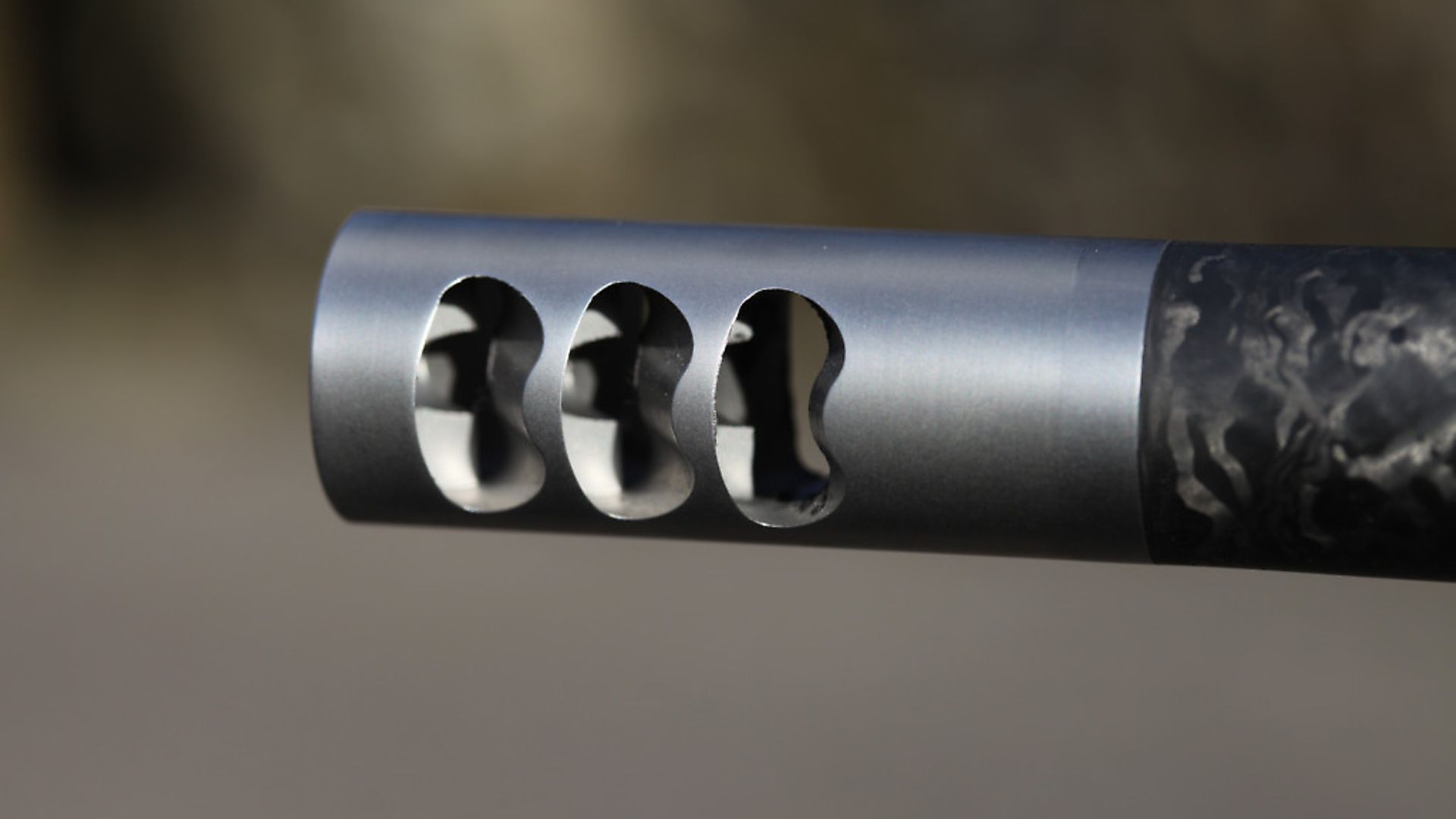 credit: Archant
credit: Archant
Testing the trio
For this article, I am testing to see if the two off-the-shelf rifles that have been enhanced for long-range shooting can consistently shoot accurately out to say 500 yards. Secondly, how do these rifles compare with Paddy’s, and what do you gain by investing £5,000?
Firstly, a word about accuracy. How accurate does a rifle need to be to shoot, say, a tricky crow at 500 yards? Let’s agree for ease of discussion that the killing zone of a crow is 6” high and 3” wide, accepting that they generally stand or walk leaning forwards at 45°, making them a very hard animal to shoot. 1 MOA at 500 yards is 5”, and 0.5 MOA is 2.5”, so we need to be accurate to between 0.5 and 0.75 MOA, and we need to take into consideration the wind.
At 100m, the GRS in .243 managed a group of 1.2” using 95g Winchester Silver tip, but I need lighter and faster bullets, so I tried Hornady 75g Superformance (3250FPS) and Winchester 58g Extreme Point Varmint, which achieved 1.2 and 0.9” respectively, which is perfectly acceptable.
Moving on to the LTR in .223: I used Remington 55g High Performance Rifle and 75g Premier Accutip ammunition, groups of 1.2 and 1.3” were attained, but then I tried a box of Hornady Superformance 53g in my ammo store, which reduced the groups down to 0.8”, perfect for the long-range tests.
Two considerations: these rifles are brand-new and have never been properly shot in, and the more I used them, the more the accuracy improved; secondly, I rarely take a 100m accuracy test seriously.
It may seem totally illogical, but some rifles that show the tightest of groups at short distances can be inconsistent at 300m, and some which shoot well at 300 yards are a little loose at 100m. In other words, get your zero more or less right at 100 yards, but also test at 200–300 yards if accuracy is your priority.
What about the 6mm Dasher custom build? Paddy took the liberty of tuning the bullets to the rifle, and after making up six different powder loads he found that 33.5gr of Varget, pushing a 95g Berger Hunting VLD bullet head at 3,100 fps, 15 thou off the lands, achieved 0.3” at 100m (0.3 MOA).
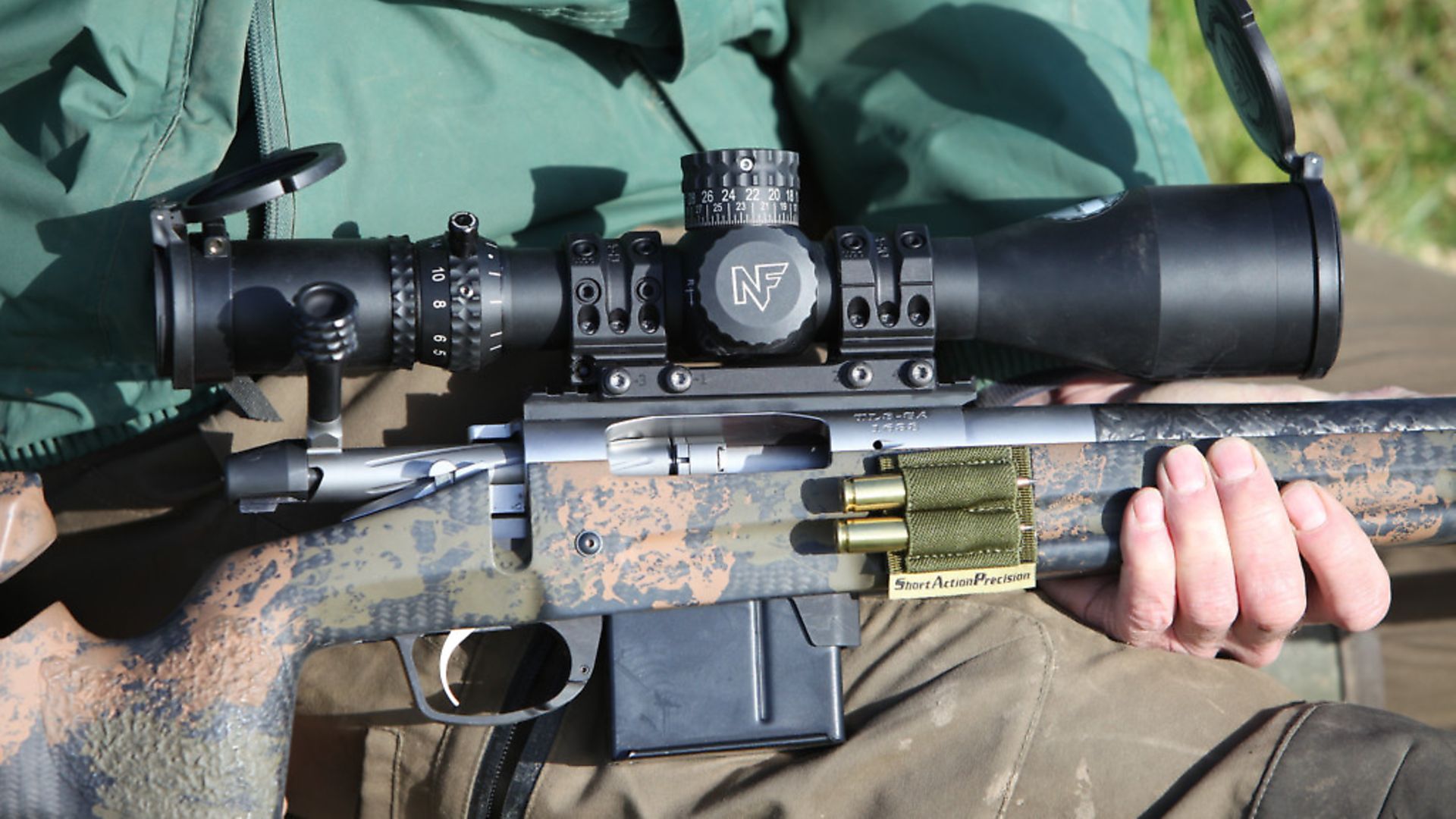 credit: Archant
credit: Archant
OK, that’s pretty impressive, and so it should be, but he reckons that can be improved. From experience, many hunters do not have the technique to consistently shoot less than 0.5–0.75 MOA, so this may be wasted on most.
I could not wait to stretch the barrels of this mix of rifles, so once they had been zeroed and were shooting consistently, the 500yd point was soon approached. To shoot at this range, way beyond most hunters’ needs, decent optics are required. Welcome to the world of lenses the size of dustbin lids, high mags, thin reticules, loads of knobs and dials, and that funny adjusting knob, the Parallax, that many seem to use as their focus adjuster… but I’m not going there!
We have a total of £6.5K worth of optics here, so I hope we are able to demonstrate their capabilities. The Browning GRS was fitted with a Swarovski Z5i 5-25 P, with a fine 4W reticule, and the Remington LTR the Meopta ZD 6-24x56 RD with a Mil Dot 2 reticule; both are long-range performers, and let’s not forget the top-of-the-range Nightforce ATACR 5-25x56 with a MOAR reticule mounted on the custom build. The latter is an astonishing long-range optic with a reticule so fine that you can pinpoint a 2” spot at 500 yards.
With zeros all set to about 100 yards, the 95g 6mm dasher needed 7.5 MOA elevation, the 75g .243, 7.5 MOA, the 58g .243, 6.5MOA and the 53g .223 10.5 MOA.
The custom 6mm Dasher grouped at just under 4”, and the others achieved 6–8” at 500 yards. Not a bad performance from the factory varminters, demonstrating how rifles have improved in accuracy over the years. The variable but very light 3–8mph wind was blowing towards me between one and two o’clock, moving the 6MM Dasher bullets 7”, 75g .243 10”, 58g .243 12” and the 53g .223, 15”.
Once dialled-in, the slightly variable wind was moving the bullets around 3-8”, making it very hard to judge. After an hour’s testing I noticed that Paddy’s custom rifle was achieving sub-3” groups, while the other two rifles did not improve. This is an ultra-accurate piece of kit.
After closer inspection of the two factory rifles, I saw that the Remington LTR action is bolted solidly through the aluminium chassis than runs along the stock with no bedding compound. On the Browning GRS, the front recoil lug and bolt are bedded in, and to the rear there is a little more compound behind the rear bolt-hole, so there is a further degree of accurization on these rifles.
As for Paddy’s custom rifle, he informs me that the stock has an integral bedding block called the ‘Manners Mini Chassis’ that requires no bedding compound at all, perhaps similarly to the LTR.
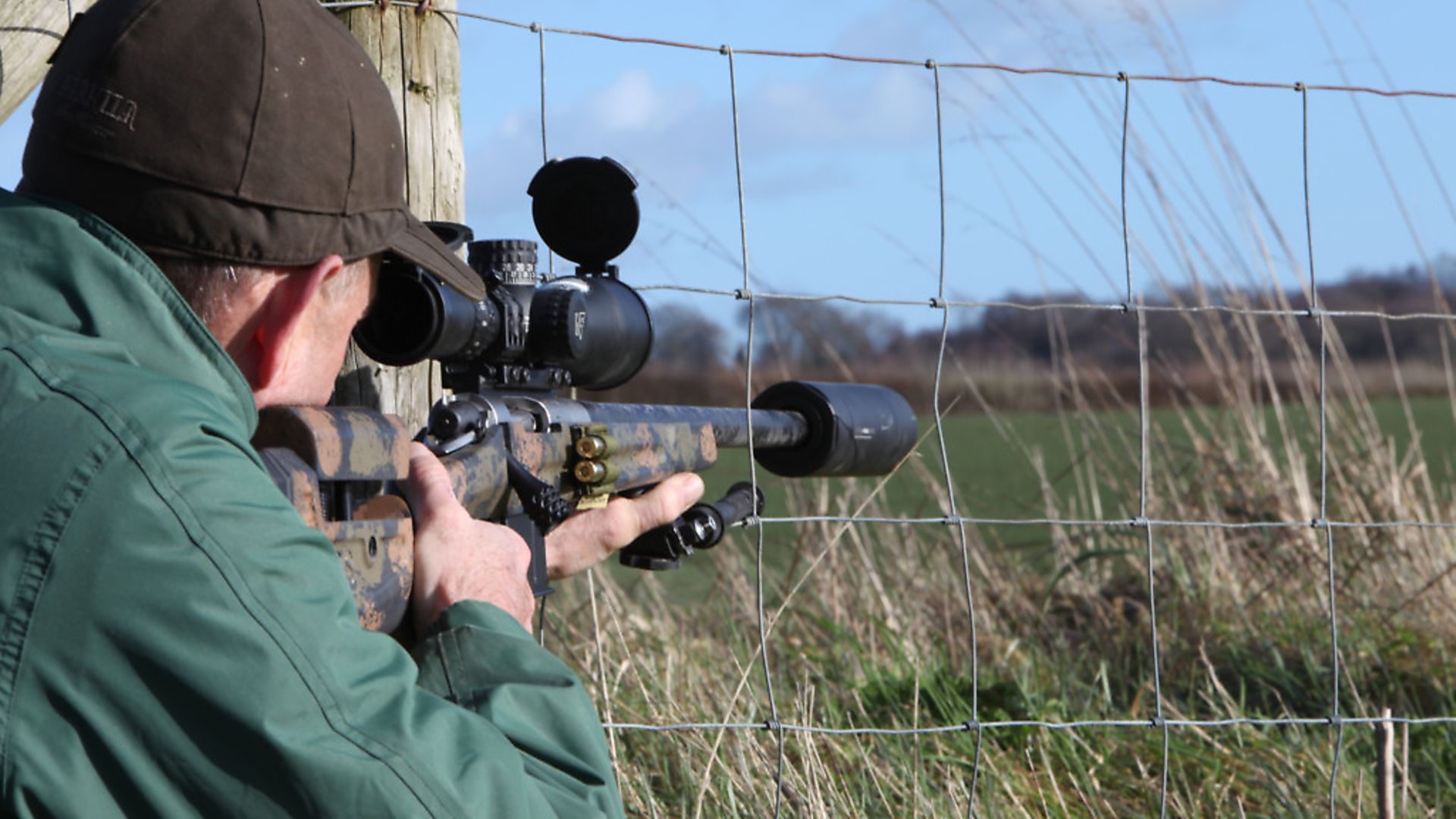 credit: Archant
credit: Archant
The verdict
So, what have I learned from this exercise? My many years of long-range shooting experience and studying the results from this brief test tells me that there is no doubt that a competitively priced factory rifle can shoot well, but it is the consistency that perhaps commands a premium. Home loading can make a huge difference to the performance of a rifle, and I have no doubt that the Browning GRS and Remington LTR can consistently achieve 0.5 MOA after a few sessions on the range and some experimentation with different bullets and powder weights.
But, if you want a guaranteed, consistent performance from your rifle, especially if animals are to be in your sights, perhaps more investment is required. I know of many standard hunting rifles that shoot very well without the need for any cosmetics or tweaks, but there can be a lot of luck involved in finding that perfect combination.
As for the rifles, I see the Remington LTR as a superb foxing rifle. It is short and compact, and perhaps not ideal for long-range shooting due to its 20” barrel, but it performed well on this test. The trigger, once adjusted to just above 2lb, was just right for this application. I found the stock very comfortable and practical for all weathers.
As for the Browning Varmint GRS, by the time the MAE moderator was fitted, making it substantially longer than the LTR, it was perhaps not so convenient for, say, fox shooting in and around vehicles at night. The super feather-weight trigger was a delight to use, and the GRS stock, though rather chunky around the pistol grip and perhaps suiting larger hands than mine, was easy to adjust to suit any shooter.
At a price of £1,378, and the LTR at £1,389, they offer great value for long-range performers. Both rifles would make great ‘crossers’ for those who want to use them for hunting and range work, appealing perhaps to different shooters thanks to the two styles of stock and differing barrel lengths.
Finally, the Dane and Co full custom build: it is in a totally different league to the others, but it was interesting to see what bang a shooter can get for their hard-earned bucks. One thing was for sure – I would love to have one in my gun cabinet, playing with it out to 800 yards, or perhaps using it for some foxing at night.
So, can the GRS and LTR shoot crows consistently at 500 yards? Yes, they can. But add to this the biggest variable (the wind), the techniques involved to hold a rifle steady, and not forgetting the kit, it is for sure a very different discipline if compared to everyday hunting.
As I finish, I know many readers will be saying, “if you haven’t earned it, you don’t deserve it,” or, “you shouldn’t take a long shot, when the skill is to get closer”. These views are perfectly robust ones that many would agree with when live animals are involved. As for the ethics behind long-range shooting, I’ll let you argue that hot topic in the pub later.
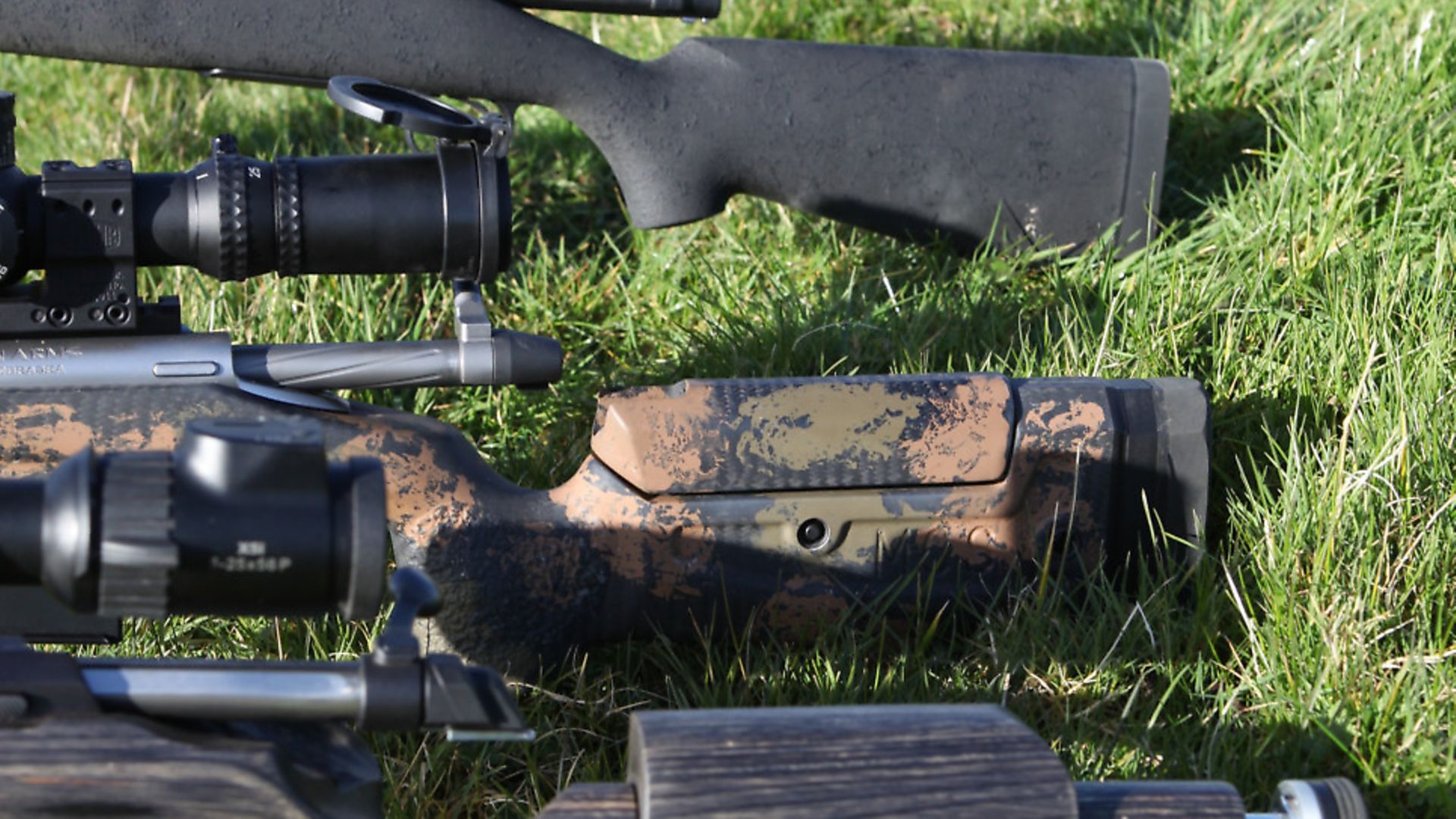 credit: Archant
credit: Archant
Remington 700 LTR
Weight (rifle only): 7.5lbs
Barrel Length: 20”
Magazine capacity: 4 (223)
Calibres: 308, 223, 300Rem Ultra Mag
Supplier: Raytrade UK
Browning: Varmint GRS
Weight (rifle only): 8lbs
Barrel Length: 24”
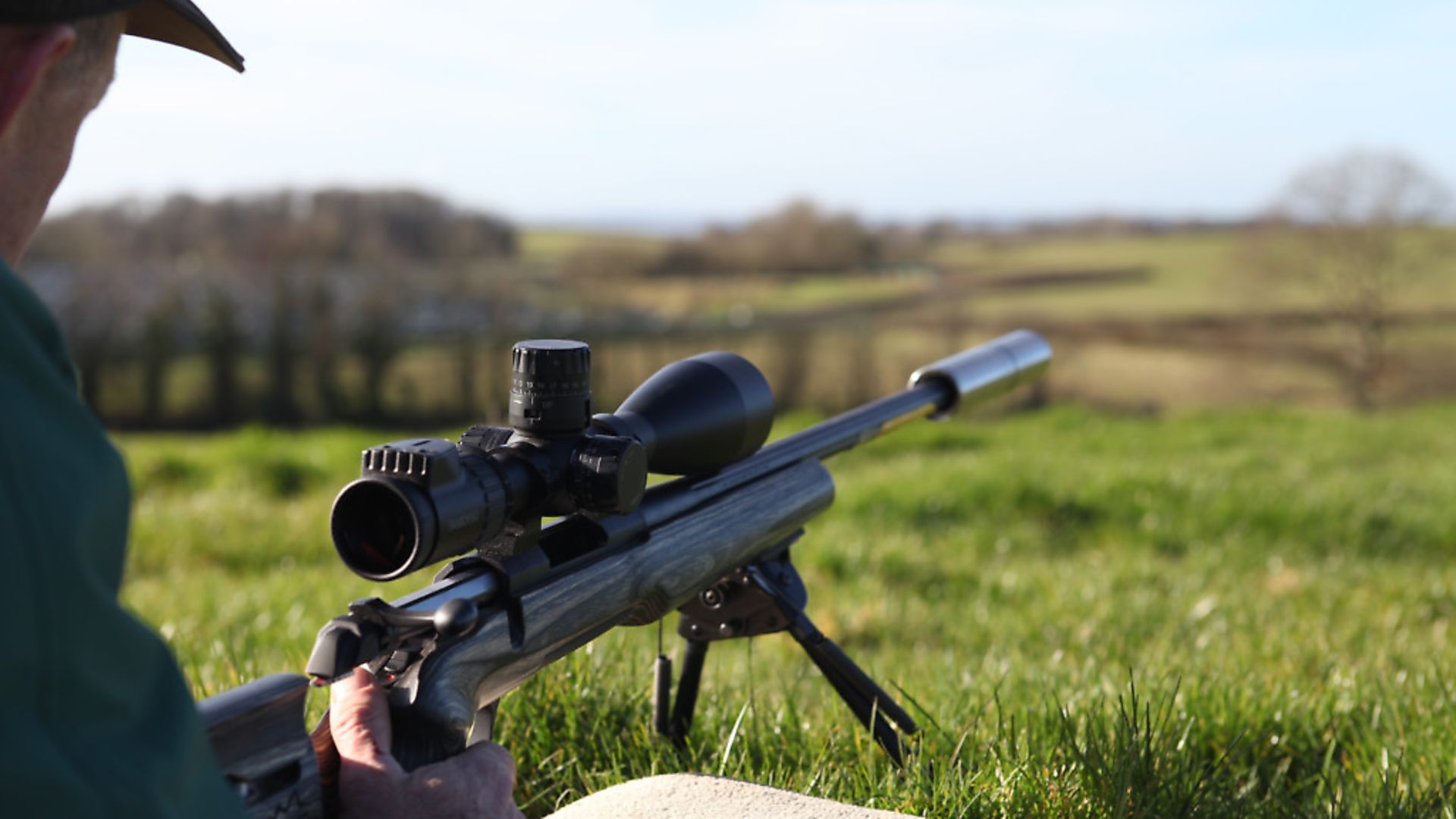 credit: Archant
credit: Archant
Magazine capacity: 4 (243)
Calibres: 243, 6.5 x 55, 308
Supplier: Browning UK
Dane and Co: PRS - 6mm Dasher
Weight (rifle only): 11lbs
Barrel Length: 26”
Magazine capacity: 10
Calibres: To order
Contact: Dane and co. www.customrifle.co.uk
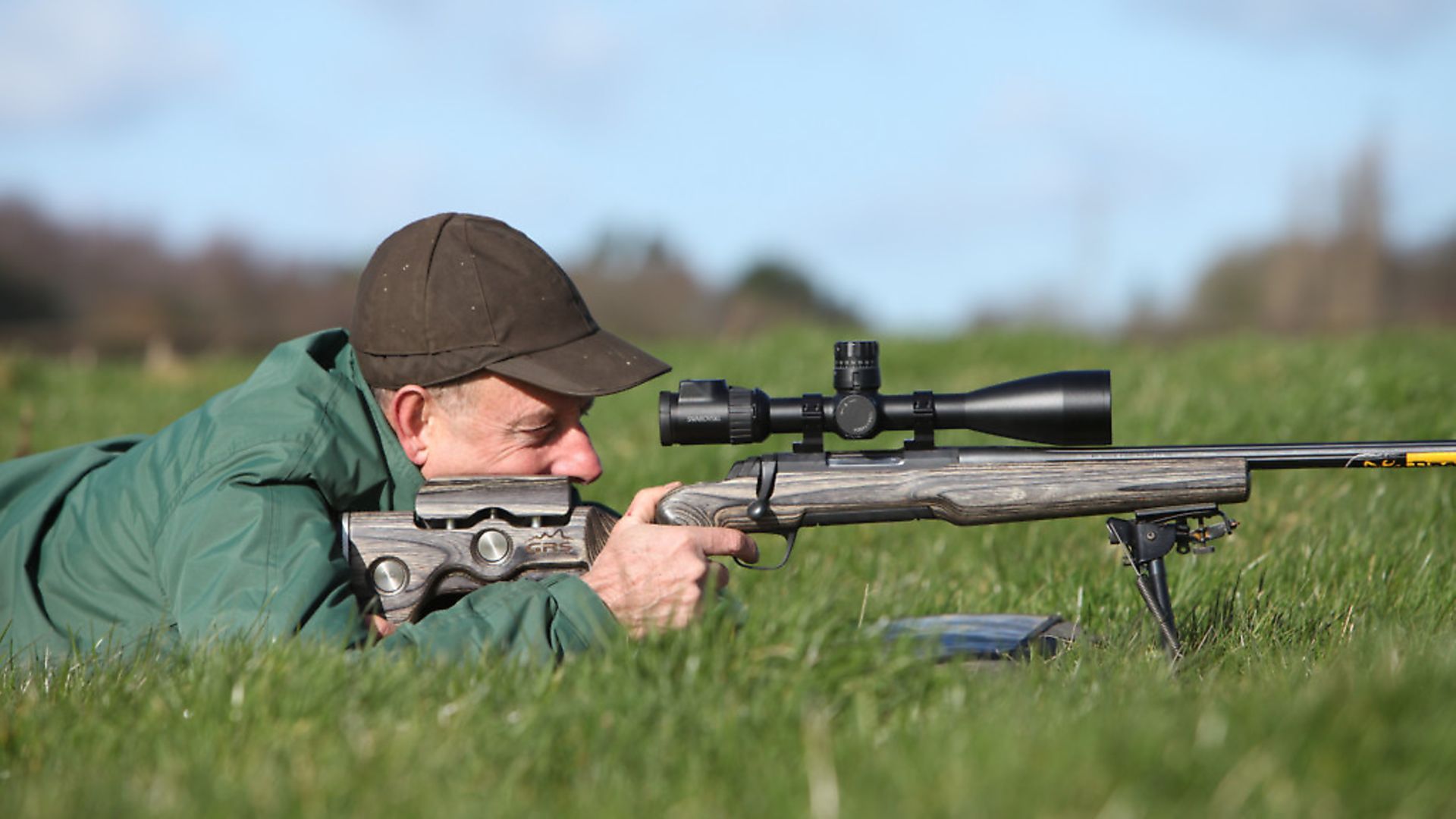 credit: Archant
credit: Archant
MAE Compact Bushless Moderator
Diameter: 38mm
Total length: 217mm
Length forward of barrel: 126mm
Material: Stainless Steel
Weight: 490g
Supplier: JMS Arms
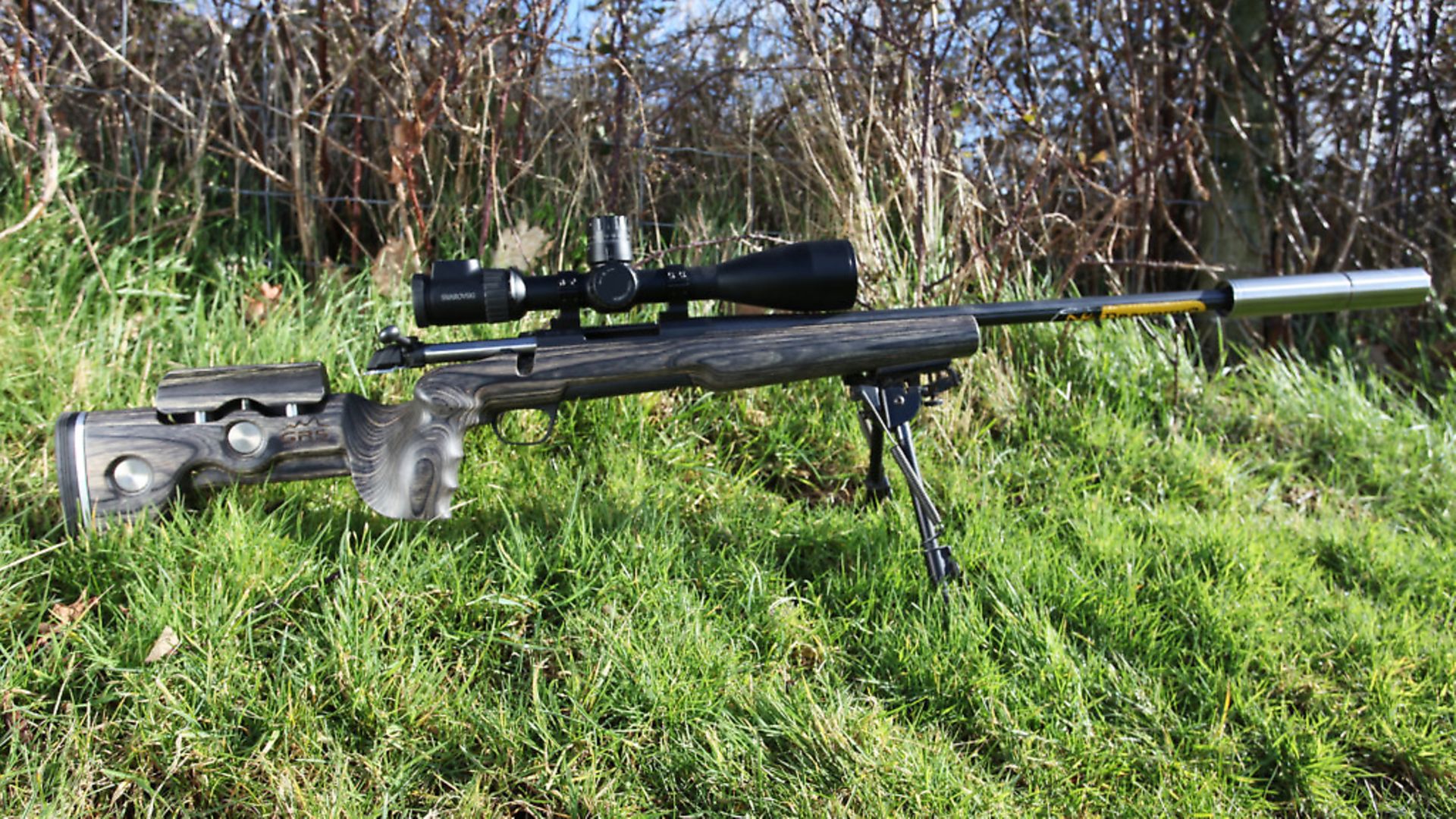 credit: Archant
credit: Archant
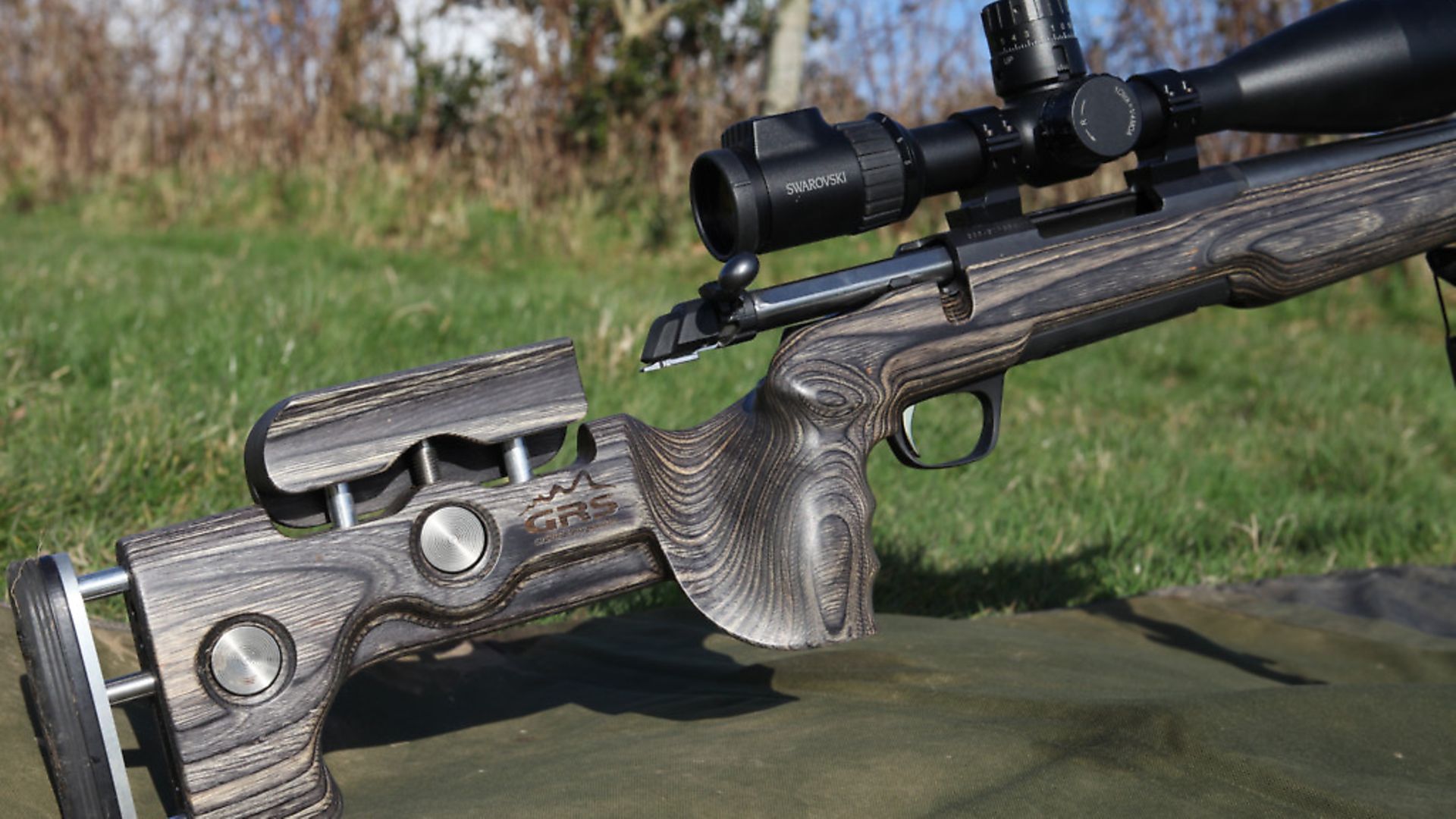 credit: Archant
credit: Archant
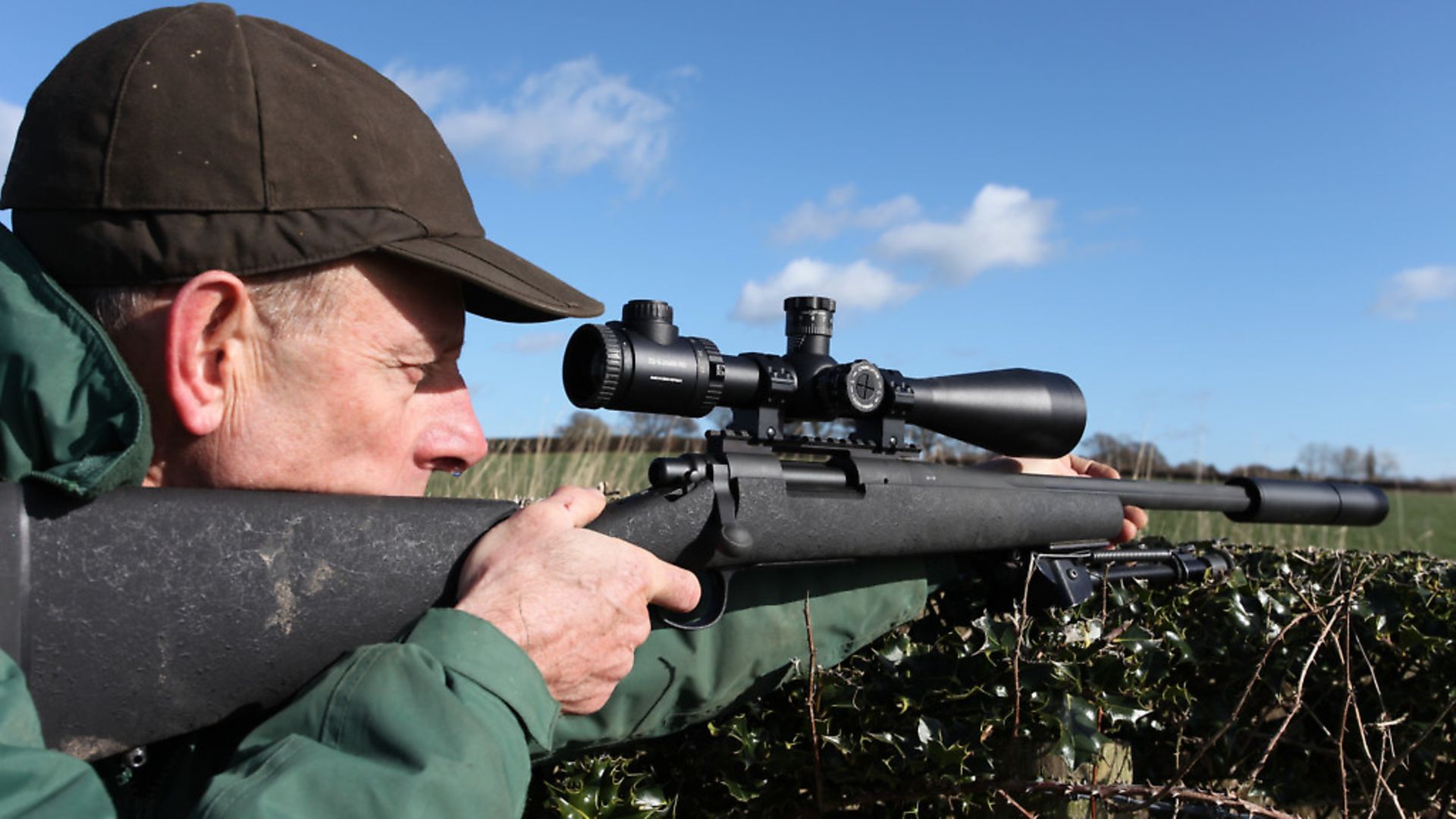 credit: Archant
credit: Archant
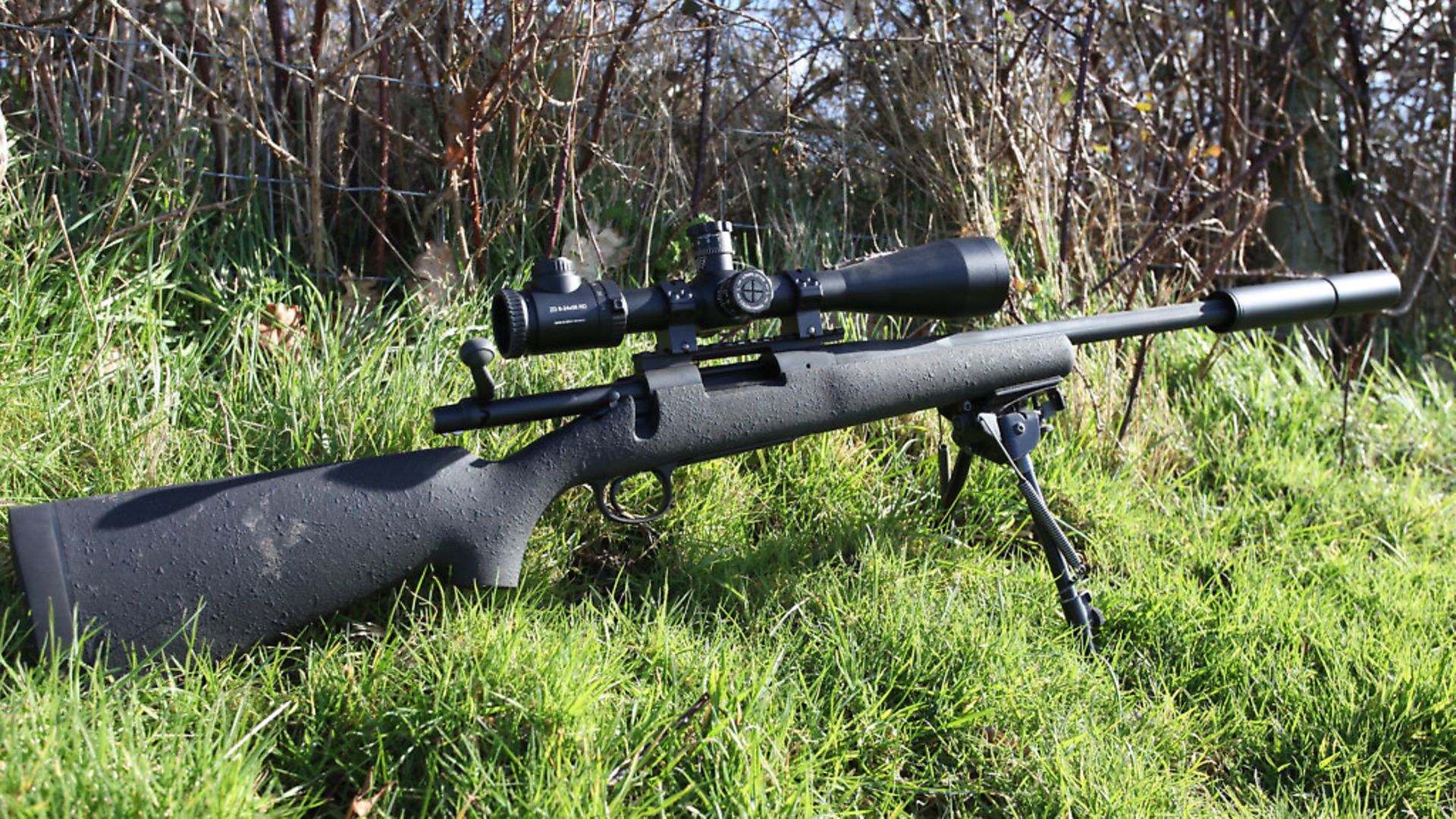 credit: Archant
credit: Archant
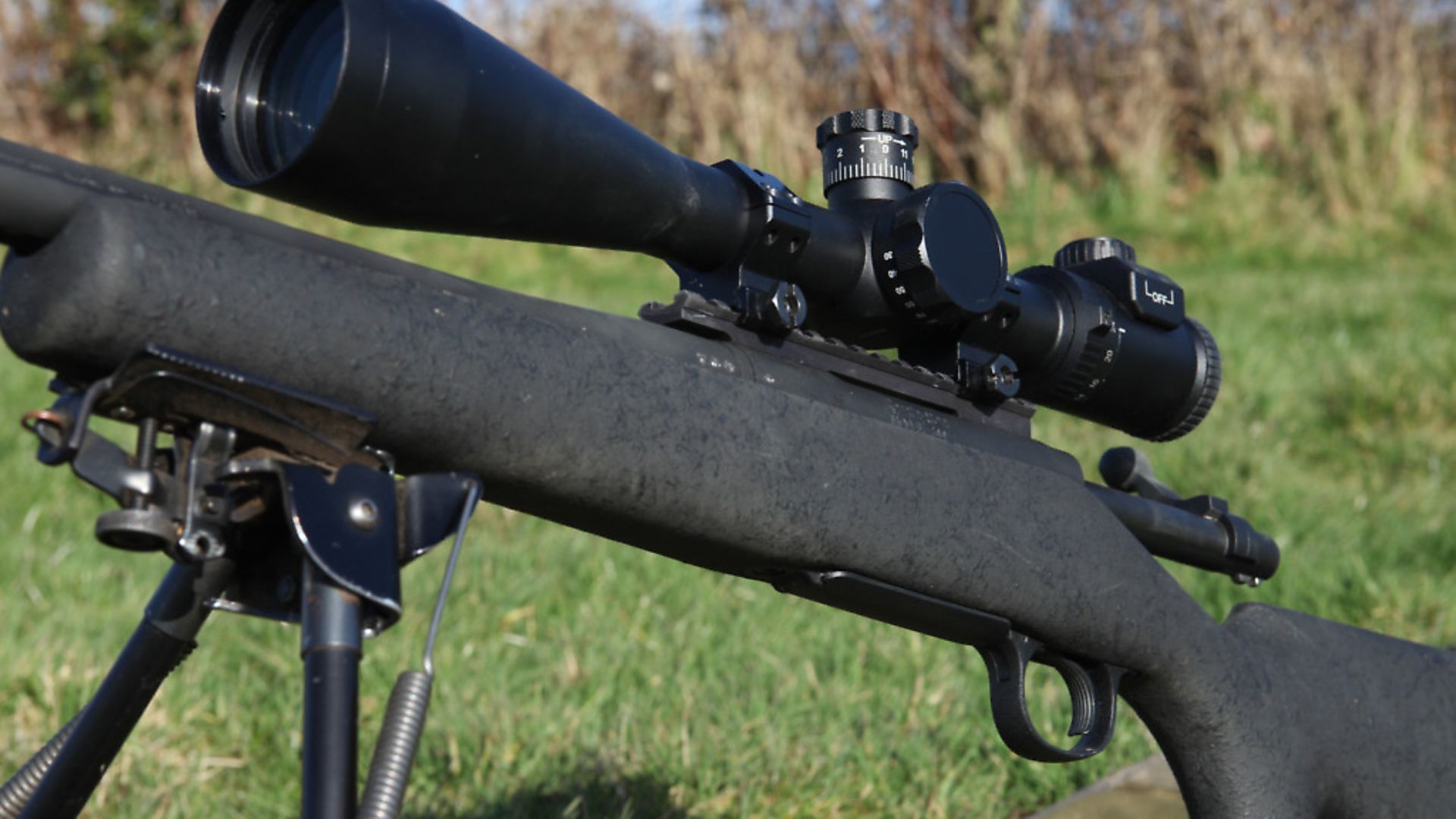 credit: Archant
credit: Archant
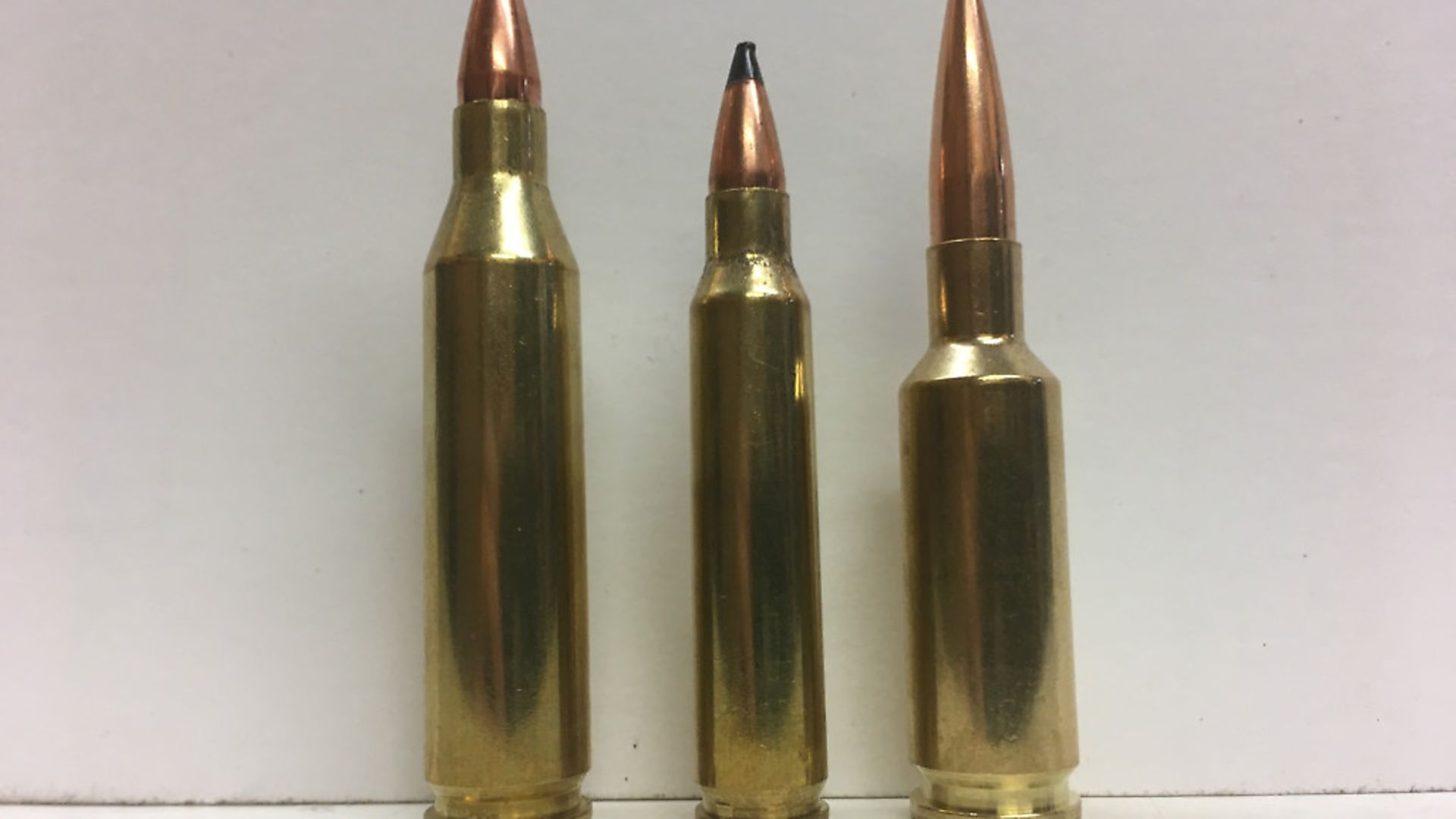 credit: Archant
credit: Archant
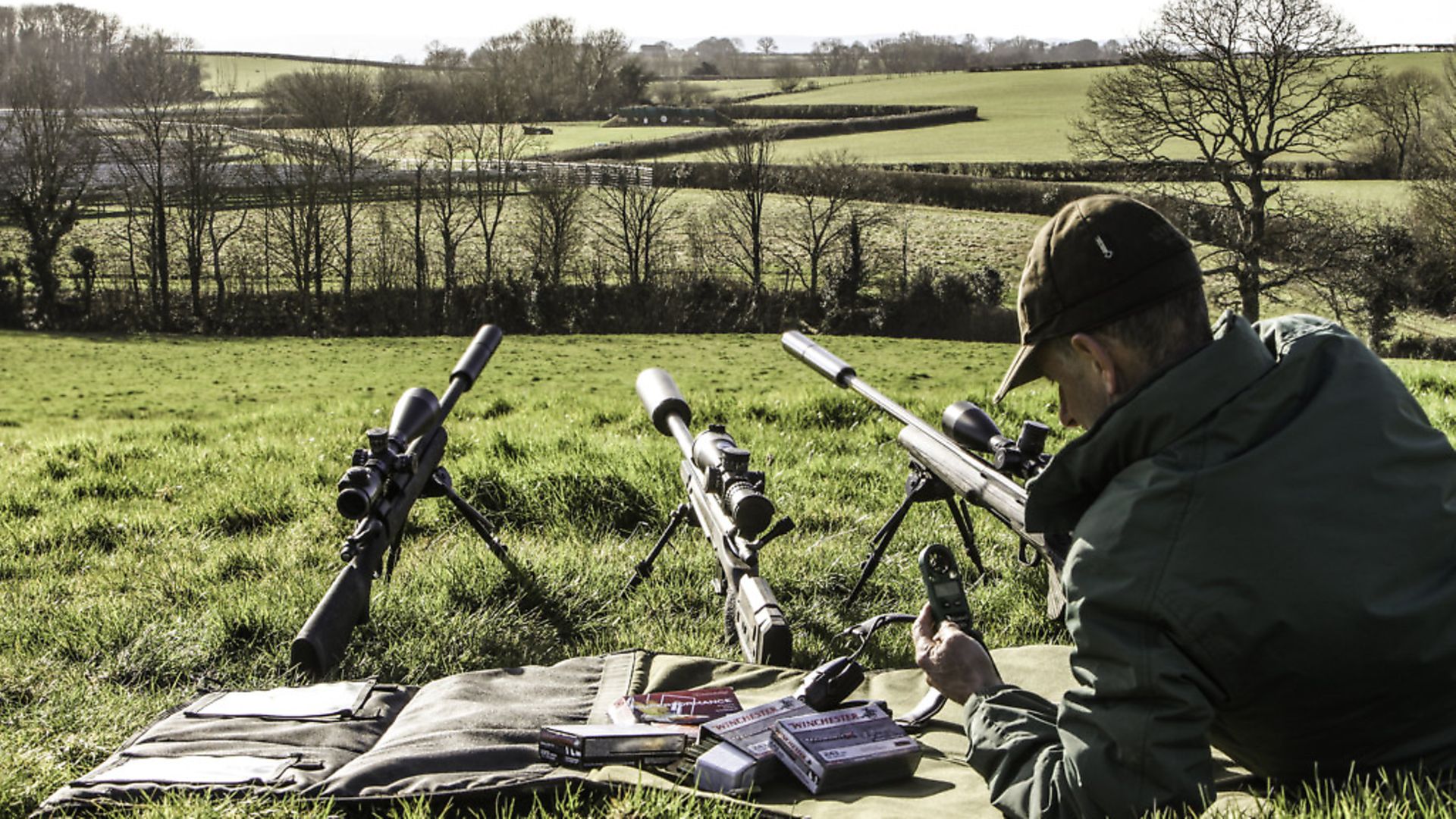 credit: Archant
credit: Archant